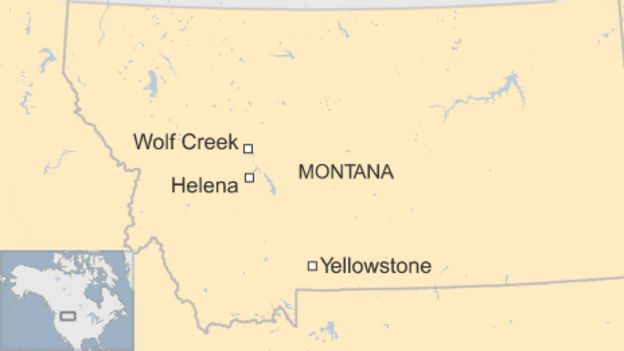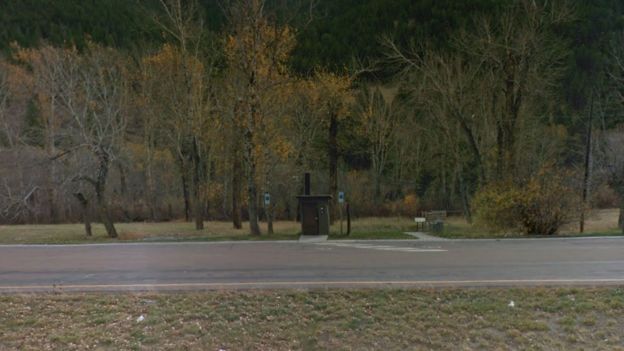The Indian Noble-Prize winning economist, Amartya Sen, postulates:
“Shortfalls in food supply do not cause widespread deaths in a democracy because vote-seeking politicians will undertake relief efforts; but even modest food shortfalls can create deadly famines in authoritarian societies.”
“Shortfalls in food supply do not cause widespread deaths in a democracy because vote-seeking politicians will undertake relief efforts; but even modest food shortfalls can create deadly famines in authoritarian societies.”
Ethiopia is the only country in Africa, or I may say, in the world that needs pre-emptive foreign intervention to save it from total destruction as Meles Zenawi’s regime sits on a thin ice that needs a flicker of fire to pull down his domino house of power. The ongoing winds of change that engulfed the countries to the north of Ethiopia (Tunisia, Egypt, Jordan, Yemen, Sudan and etc) which are relatively much better, in terms of civil liberty and economic life, are bound to sweep through Ethiopia with vengeance in the very near future.

Ethiopia under the current dictatorial regime has all the ingredients that cause to trigger uncontainable mass uprising that has the potential to melt down Mele Zenawi’s regime. The forth coming uprising, unlike Egypt or Tunisia, will result rivers of blood on the streets of Addis followed by ethnic cleansing of the Tigrean people because the regime and the army that committed untold human rights violations are entirely based on one ethnic (Tigrean) group. Besides the economic and political sectors which are colonised by ethnic Tigreans, the security sector and the Army for the first time in the history of Ethiopia became the monopoly of one ethnic group -Who is who of Ethiopia’s Top Army Brass.
(also here >> about Megistu Haile Mariam)Ethiopia has a grim reading in all indicators of good governance
Tunisia and Egypt were both flashing consistent GDP growth as Zenawi does at the end of every year but all indicators show that the wealth didn’t trickle down to the common man – even the Dergi regime registered their highest, 13.9%, in 1987 just after the famine and at the height of the internal wars. Despite the overall economic growth, obviously none people centred, in the country, Ethiopia still has one of the lowest GDP per capita in the world and also a quarter of its people are food aid dependent.
Premier Zenawi is so fraudulent that in reaction to IMF and World Bank recommendations to privatise public owned assets; he instead legalised the theft of the whole lot in a way even the blind can see. The Ethiopian Privatization Agency (EPA) was established as an autonomous agency in February 1994 to oversee the privatisation of the state owned enterprises. In place of “hands off” free market approach, the Orwellian regime transferred the ownership of state assets to TPLF and thus transformed the state assets in to parastatals run by exclusive Tigrean people who are affiliated with party. This stifled competition and created an economy based on state sector and phony conglomerates, parastatals, whose income goes to private pockets. See the extent of corruption List of TPLF owned business
In response to his irresponsible fiscal policy that resulted Ethiopia’s inflation to jump from 10.2 to 14.5 percent last month after a steep rise in food and non – food prices caused in part by two successive currency devaluation in less than 12 months – Premier Zenawi resorted to putting price caps on many commodities. The business community withdraw their stocks from the shelves because the market is governed by demand and supply not by circulars from the Premiers’ office.
At the time of this writing, Thursday 03rd Feb, the Premier ruled out the possibility of another major devaluation of the Birr in the coming five years. The premier told his so called legislators, in question and answers suggestion, that the inflation is caused by the traders whom he accused are artificially inflating food prices on the back of global price increases and a September devaluation of the birr.
The premier seems to have taken leave out of sanity because there is no expert in this world who can say there will be no inflation that can warrant to depreciating the birr for the coming five years especially when it was a general knowledge that another devaluation was to come in the following two months – this is a panic reaction induced by the Jasmine revolution.
Ethiopia can support the food needs of its people if the government is wise enough to invest in to viable agricultural projects instead of selling the best land to flower growing companies at nominal fee of £10 a hector for hundred years lease. This sort of land confiscation policy created a multitude of landless peasants who either coerced to join the internally displaced people or toil their own land for the new foreign landlords for a very low wage. Projects of this nature are preferred by Meles regime because they pop up the GDP figures which he enjoys to brandish at all times.
Well preserved forests that covers over three thousand hectares went under the hammer and is to be given to Verdanata Harvests PLC, an Indian company, against the wishes of the locals. The forest is to make way for tea plantations that would affect the ecological system of the area. Despite public outcry and Ethiopia president’s, Girma Wolde-Girogis, expressed concerns over land grabbing in the Gambella Regional State (Southwest Ethiopia), Mezghnger Zone, Guderre Woreda ; Premier Zenawi wants the project, without further consultation, to start on time because it is good for the GDP – people don’t eat distorted GDP figures.
The annual Freedom House’s report ranks countries in the world as Free, Partly Free and Not Free based on their respect for political rights and civil liberties. The latest report notes that Ethiopia’s ranking has dropped from ‘Partly Free’ in 2009 to ‘NOT FREE’ in 2010 due to the heightened political repression, and the clampdown on independent media and nongovernmental organizations. Freedom House also notes that Ethiopia’s decline is the most significant drop in the ranking in the sub-Saharan Africa as well as the world in 2010.
A recent ranking http://www.prosperity.com/rankings.aspx put Ethiopia near the bottom of the world prosperity index (107th out of 110 countries in the world) and also UNDP’s index ranked it at the bottom in UNDP Human Development Indicator (157 out of 169 countries). A statistics by Socialbakers.com shows (202nd out of 213) that Face book penetration in Ethiopia is only 0.28 percent, which is one of the lowest in Africa. Ethiopian and other independent websites are blocked and radios including VOA are jammed. The internet speed of Ethiopia is the slowest in Africa and yet has the highest censorship regime in place – now word like Egypt, Tunisia are put in the bad books of the censorship board.
Ethiopia’s successive dictatorial regimes were traditionally legitimised and always rewarded for their unparalleled human rights violations by the international community and Zenaw’s regime is treading the ancient road in this new global village. See the latest human rights report of Ethiopia Human Rights Watch (full Report)
Background to Ethiopia’s Tigrean Regime
Primier Minister Mele Zenawi came to power on the back of highly disciplined communist secessionist guerrilla force, Tigrean Peoples Liberation Front, that fortune handed the crown of Ethiopia in 1991. Initially the executive committee were divided as to how to handle the new unprepared for challenge - they never thought about governing Ethiopia - of running Ethiopia as opposed to their original secessionist goal. TPLF’s secret consensus at the time was to build and develop their barren region from the treasury of Ethiopia and to superimpose their guerrilla forces and their other cadres on the institutions that held Ethiopia together. This paradigm was adopted to appease the diehard secessionist members because it provides a strong safety valve – it is simply win- win situation in the eyes of the intransigent secessionists. Zenawi was quoted to have said “if the going gets tough then we have our developed region to fall back with the added benefit that Ethiopia will never haunt us as it will cease to exist after our departure”.
All the nationality based armed fronts in Ethiopia, EPLF, ONLF, OLF and etc stood in solidarity with the TPLF on the understanding that they could jointly thrust the multi ethnic backward Ethiopia, to the 21st century political life but to their dismay found out that the TPLF is still committed to their secessionist agenda. Within months of coming to power the TPLF implemented their hidden agenda by disarming most of nationality based armed fronts with exception of EPLF (Eritrean People’s Liberation Front) and ONLF (Ogaden National Liberation Front), the later seeking to liberate the Somali inhabited regions of Eastern Ethiopia and the former were their mentors which they can’t afford to touch.
Premier Zenawi and his comrades, the executive committee of the TPLF, lost no time in replaying the scenarios in George Orwell’s classic novel “animal farm” an allegory of early history of the Soviet Union. The TPLF’s secessionist guerrilla fighters who were indoctrinated to defend the interest of their region on the expense of Ethiopia were renamed as the Ethiopian National Defence Force (ENDF). Federal Army’s rank and file is all inclusive and populated by members that hail from the nationalities of the federal states and are educated to be the guarantor of the constitution and to remain none- partisan in the local and national politics while the ethnic guerrilla forces have allegiances only to their superiors and to their region and thus see other nationalities as their subservient – bounty of war. Ethiopia has no federal Army because the country’s ambition to become federal was by design aborted by the TPLF.
The Premier and his men also renamed the TPLF as EPRDF (Ethiopian People’s Revolutionary Democratic Front) to mislead the international community in to believing that the regime is broad based one. EPRDF is a Trojan horse invented by TPLF to hold on to power by false pretence. The parties that are claimed by the TPLF government to share the umbrella of EPRDF with them are but only figments in their imaginations. With the exception of TPLF none of the other parties from the EPRDF are real and legitimate representatives of their constituents. The OPDO(Oromo People’s Democratic Organisation), in the new speak, is the new name for the outlawed OLF(Oromo Liberation Front), the SEPDF is a new name that came out of the blue and the ANDM(Ahmara National Democratic Movement) is the new name of EPDM(Ethiopian People’s Democratic Movement). The ONLF (Ogaden Liberation Front), OLF and ALF Afar Liberation front and others are active and engage the TPLF’s army in the country side all year round.
Conclusion: United States should initiate a quick regime change
United States and its western allies keep this repressive regime in power by pumping three billion dollars a year (military and non-military aid) without demanding good governance in exchange. The same money is used by the Tigrean forces to subdue the other Ethiopian nationalities – America knowingly instigates, finances and lends diplomatic support to the genocidal regime of Meles Zenawi.
Like the dictators (Mubarik, Sainal Abdin, Melez and etc) the US government supports, America, usually wakes up when things fall apart or at the 11th hour. In the case of Egypt, the soon to come democratic government, irrespective if Islamist Brotherhood takes over or not, will be accountable to their voters who are resentful the subservient status their country is relegated to. Egypt which is strategically located at the Zeus canal where quarter of world trade goes through and which is also the centre of the Muslim and Arab world will never be the same rubber stamp but will occupy its lofty position.
Taking in to account the dire economic, social and political situation of Ethiopia; chances of Meles regime surviving the people’s revolution is next to nil, so for the US to start regime change in Ethiopia, as soon as possible, is the only practical option that can save the second most populace country in Africa.
The current relocation of US embassy to a safer part of Addis, at a time the country is at the brink of total disaster, is a misplaced priority. Whenever a US embassy is relocated to where they see as a safer compound, surprisingly the host government falls into black hole. The Experience of US embassy’s relocation to KM7, Afgoi road, compound just before a year Somalia imploded was a bad investment which is locally known as the mad house.-the compound was turned in to UNISOM army barrack and later in to IDP camp and I am afraid the new embassy in Addis will most probably become a future IDP camp.
Well preserved forests that covers over three thousand hectares went under the hammer and is to be given to Verdanata Harvests PLC, an Indian company, against the wishes of the locals. The forest is to make way for tea plantations that would affect the ecological system of the area. Despite public outcry and Ethiopia president’s, Girma Wolde-Girogis, expressed concerns over land grabbing in the Gambella Regional State (Southwest Ethiopia), Mezghnger Zone, Guderre Woreda ; Premier Zenawi wants the project, without further consultation, to start on time because it is good for the GDP – people don’t eat distorted GDP figures.
The annual Freedom House’s report ranks countries in the world as Free, Partly Free and Not Free based on their respect for political rights and civil liberties. The latest report notes that Ethiopia’s ranking has dropped from ‘Partly Free’ in 2009 to ‘NOT FREE’ in 2010 due to the heightened political repression, and the clampdown on independent media and nongovernmental organizations. Freedom House also notes that Ethiopia’s decline is the most significant drop in the ranking in the sub-Saharan Africa as well as the world in 2010.
A recent ranking http://www.prosperity.com/rankings.aspx put Ethiopia near the bottom of the world prosperity index (107th out of 110 countries in the world) and also UNDP’s index ranked it at the bottom in UNDP Human Development Indicator (157 out of 169 countries). A statistics by Socialbakers.com shows (202nd out of 213) that Face book penetration in Ethiopia is only 0.28 percent, which is one of the lowest in Africa. Ethiopian and other independent websites are blocked and radios including VOA are jammed. The internet speed of Ethiopia is the slowest in Africa and yet has the highest censorship regime in place – now word like Egypt, Tunisia are put in the bad books of the censorship board.
Ethiopia’s successive dictatorial regimes were traditionally legitimised and always rewarded for their unparalleled human rights violations by the international community and Zenaw’s regime is treading the ancient road in this new global village. See the latest human rights report of Ethiopia Human Rights Watch (full Report)
Background to Ethiopia’s Tigrean Regime
Primier Minister Mele Zenawi came to power on the back of highly disciplined communist secessionist guerrilla force, Tigrean Peoples Liberation Front, that fortune handed the crown of Ethiopia in 1991. Initially the executive committee were divided as to how to handle the new unprepared for challenge - they never thought about governing Ethiopia - of running Ethiopia as opposed to their original secessionist goal. TPLF’s secret consensus at the time was to build and develop their barren region from the treasury of Ethiopia and to superimpose their guerrilla forces and their other cadres on the institutions that held Ethiopia together. This paradigm was adopted to appease the diehard secessionist members because it provides a strong safety valve – it is simply win- win situation in the eyes of the intransigent secessionists. Zenawi was quoted to have said “if the going gets tough then we have our developed region to fall back with the added benefit that Ethiopia will never haunt us as it will cease to exist after our departure”.
All the nationality based armed fronts in Ethiopia, EPLF, ONLF, OLF and etc stood in solidarity with the TPLF on the understanding that they could jointly thrust the multi ethnic backward Ethiopia, to the 21st century political life but to their dismay found out that the TPLF is still committed to their secessionist agenda. Within months of coming to power the TPLF implemented their hidden agenda by disarming most of nationality based armed fronts with exception of EPLF (Eritrean People’s Liberation Front) and ONLF (Ogaden National Liberation Front), the later seeking to liberate the Somali inhabited regions of Eastern Ethiopia and the former were their mentors which they can’t afford to touch.
Premier Zenawi and his comrades, the executive committee of the TPLF, lost no time in replaying the scenarios in George Orwell’s classic novel “animal farm” an allegory of early history of the Soviet Union. The TPLF’s secessionist guerrilla fighters who were indoctrinated to defend the interest of their region on the expense of Ethiopia were renamed as the Ethiopian National Defence Force (ENDF). Federal Army’s rank and file is all inclusive and populated by members that hail from the nationalities of the federal states and are educated to be the guarantor of the constitution and to remain none- partisan in the local and national politics while the ethnic guerrilla forces have allegiances only to their superiors and to their region and thus see other nationalities as their subservient – bounty of war. Ethiopia has no federal Army because the country’s ambition to become federal was by design aborted by the TPLF.
The Premier and his men also renamed the TPLF as EPRDF (Ethiopian People’s Revolutionary Democratic Front) to mislead the international community in to believing that the regime is broad based one. EPRDF is a Trojan horse invented by TPLF to hold on to power by false pretence. The parties that are claimed by the TPLF government to share the umbrella of EPRDF with them are but only figments in their imaginations. With the exception of TPLF none of the other parties from the EPRDF are real and legitimate representatives of their constituents. The OPDO(Oromo People’s Democratic Organisation), in the new speak, is the new name for the outlawed OLF(Oromo Liberation Front), the SEPDF is a new name that came out of the blue and the ANDM(Ahmara National Democratic Movement) is the new name of EPDM(Ethiopian People’s Democratic Movement). The ONLF (Ogaden Liberation Front), OLF and ALF Afar Liberation front and others are active and engage the TPLF’s army in the country side all year round.
Conclusion: United States should initiate a quick regime change
United States and its western allies keep this repressive regime in power by pumping three billion dollars a year (military and non-military aid) without demanding good governance in exchange. The same money is used by the Tigrean forces to subdue the other Ethiopian nationalities – America knowingly instigates, finances and lends diplomatic support to the genocidal regime of Meles Zenawi.
Like the dictators (Mubarik, Sainal Abdin, Melez and etc) the US government supports, America, usually wakes up when things fall apart or at the 11th hour. In the case of Egypt, the soon to come democratic government, irrespective if Islamist Brotherhood takes over or not, will be accountable to their voters who are resentful the subservient status their country is relegated to. Egypt which is strategically located at the Zeus canal where quarter of world trade goes through and which is also the centre of the Muslim and Arab world will never be the same rubber stamp but will occupy its lofty position.
Taking in to account the dire economic, social and political situation of Ethiopia; chances of Meles regime surviving the people’s revolution is next to nil, so for the US to start regime change in Ethiopia, as soon as possible, is the only practical option that can save the second most populace country in Africa.
The current relocation of US embassy to a safer part of Addis, at a time the country is at the brink of total disaster, is a misplaced priority. Whenever a US embassy is relocated to where they see as a safer compound, surprisingly the host government falls into black hole. The Experience of US embassy’s relocation to KM7, Afgoi road, compound just before a year Somalia imploded was a bad investment which is locally known as the mad house.-the compound was turned in to UNISOM army barrack and later in to IDP camp and I am afraid the new embassy in Addis will most probably become a future IDP camp.






